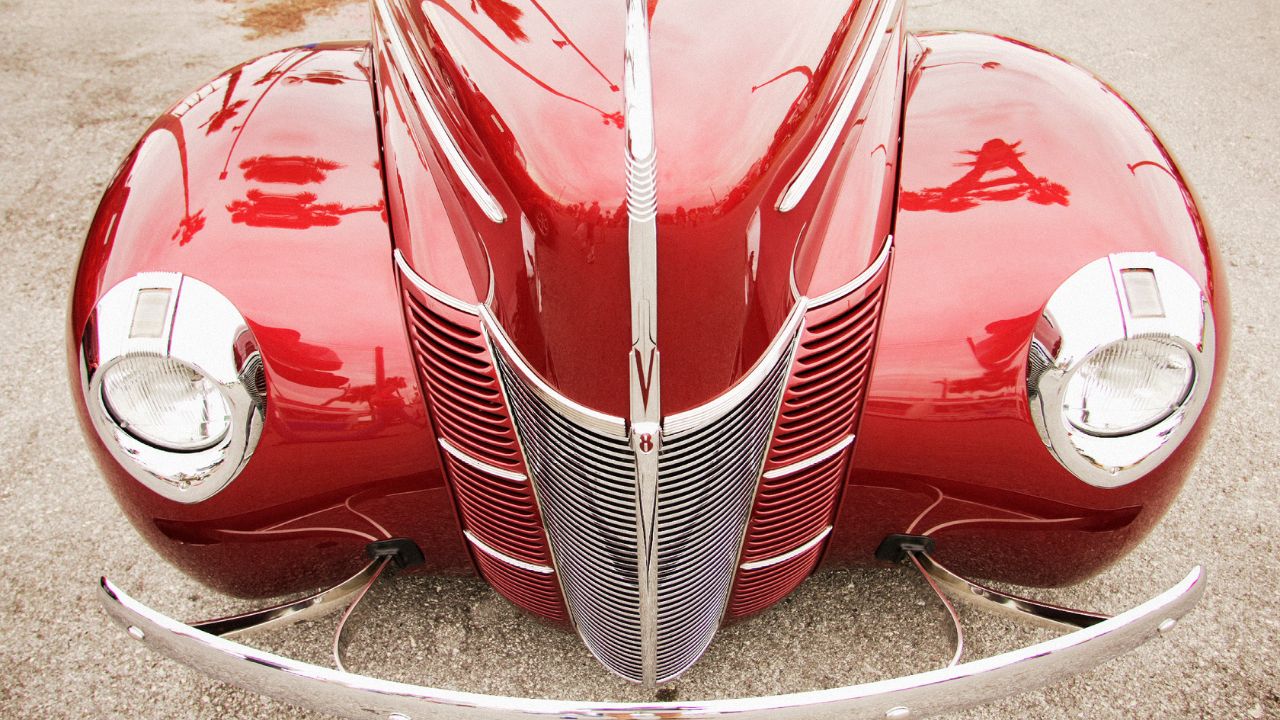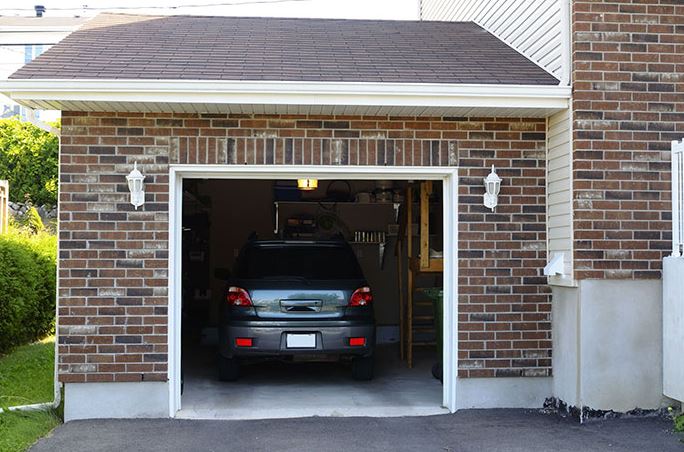
Whitewall tires are a popular choice for modern cars, and have been since the 1950s. Early models featured raised white walls that yielded a stripe of white when scuffed by curbs. This single-colored design, which remains desirable even today, became the benchmark for traditional Hot Rods, Lowiders, and Resto-California cars. These cars were also instrumental in the resurgence in demand for these tires.
Coker tires
The Chattanooga, Tennessee-based Coker Tire Company makes classic whitewall tires. These tires feature the timeless look of classic car tire designs, but are made with modern materials and construction. Coker owns the manufacturing rights for several iconic tire brands and its tires are identical to the originals. Coker tires also come in many sizes. Their white sidewalls with vintage tread design makes them perfect for cars built before the golden age.

Diamond Back Classics
They are well-known for making tires that fit classic cars and hot rods. Diamond Back Tires is the largest manufacturer of whitewall tires. Their products are compatible with classic and hot-rodding cars. The company has been operating for more than thirty years. Although these tires might seem questionable, they can be fitted to both modern-day and classic cars.
Diamond Line
Modern cars may have whitewall tires that you are unsure how to clean. Whitewall tires can be difficult to clean. The chemicals contained in black rubber can leach onto the white. It is possible to stack two tires with different sidewalls. This stain is impossible to remove with even the most powerful cleaning agents. It may be necessary to take the whitewalls to a professional car body shop.
Blue Line
The process of creating a modern vehicle with blue line whitewalls tires is not as straightforward as it seems. Only a few tire manufacturers are interested. Due to the high visual defects these tires present, special care must be taken when working with them. Vogue Tyre, which developed the whitewall tire, describes the entire process from storage through stacking and handling. Mounting a modern vehicle with blue-line whitewall tires is much the same process as installing a traditional passenger tire.

Cadillac
Although they are less common in modern cars than older models, having wide whitewall tires is an indication of quality. Cadillacs used wide whitewall tires for the first time in the 1960s. Typically, these cars had double or triple stripes and were decorated with one inch wide whitewall tires. Today, the only major luxury car manufacturer still offers wide whitewall tires on certain models. Cadillac's website has more information.
FAQ
How can I prepare to become a mechanic apprentice?
It is essential to understand what you are getting into. You need to understand the mechanics of cars and how they work. This will allow you to be prepared for your first day at work.
Also, you need to know how fix simple problems, such as tires and lights that aren't working.
This should help you learn how to diagnose issues and repair them yourself.
Also, it is important to know how parts fit together so that you can put them back together.
Finally, it is important to know how tools can be used safely and efficiently.
All of these factors will allow you to become a skilled mechanic.
What qualifications do you need to be a mechanic?
To become a mechanic, you'll need to pass a series of exams. These include:
-
A general knowledge test
-
A practical examination
-
An apprenticeship test
These tests are meant to help you grasp the fundamentals of mechanical engineering and physics, before you begin your journey as a mechanic.
These tests will allow you to be a mechanic once you have passed them. But, you will still need an apprenticeship. This will involve trade training.
To learn all you can about vehicle repair, you will need to take classes and workshops. You'll also have to work alongside experienced mechanics.
You'll need a high level of concentration and attention to detail if you want to succeed as a mechanic. You will need to pay careful attention to every aspect when repairing vehicles.
To be a successful mechanic, you will need patience and perseverance. This may not be the career path that you want if you aren't able to follow directions.
However, if you love cars or enjoy working on them, you might be happy in this field.
What is the length of an apprenticeship as an automotive mechanic?
An automotive mechanic apprenticeship takes around three years to complete. This includes two year at school as well as two years as an apprenticeship. The first year of training is spent in the trade. This includes theory and practical skills as well as safety procedures. You'll also learn how tools can be used safely and efficiently during this year. After the first year, a second year will be spent on-thejob training. This year you'll get experience in different trades. These are also the times you can attend formal courses.
The final year is dedicated to earning certifications and qualifications in the field. These include NVQs, which are obtained after passing industry-specific exams. In addition, there are HNCs (Higher National Certificates) that cover general subjects such as management, business administration, and customer service. For those interested in pursuing certain trades, City & Guilds certificates are available.
What does it matter which college I attend?
It's not true. In terms of getting into the auto industry, there is no distinction between colleges. However, some schools offer better programs than others so if you're looking for something more specialized, look elsewhere.
What jobs are available for car mechanics?
Three main areas of employment are available for car mechanics:
-
Automotive repair shops
-
Dealerships
-
Independent garages
Automotive repair shops
Most people think of this as the first step to becoming a mechanic. In fact, it's probably the easiest way to get started. You can either work in a shop run by someone else, or start your business.
If you decide to work at a shop, you'll need to apply to join a union. After being accepted into the union, the union will provide training.
Once you complete the training, it's time to get started.
Registering with the government is required if you intend to open a garage. After you have registered, you will need to meet certain standards.
When you've registered, you'll be given a license to operate your garage.
Your license will allow you to sell spare parts and do minor repairs. It won't allow you to fix major engine problems.
In addition to selling spare parts, you'll also be expected to offer advice and guidance to customers.
Dealership jobs
Most dealerships employ mechanics that specialize in one aspect of the vehicle. They might specialize in one area, such as brakes and tires.
Some dealerships have the option to hire general mechanics who can take care of all aspects.
These positions may require applicants to complete specific training before being allowed on the job. Employers can then choose the best candidates for their job.
Some dealerships even recruit graduates straight from university. These graduates already have a basic understanding of mechanical engineering, so they are able to learn all about cars.
Independent garages
Independent garages aren't associated with any particular dealership. Instead, independent garages tend to concentrate on providing high-quality services.
Independent garages don't have to be associated with any particular company. This allows them to offer higher wages. These jobs generally pay better than those at dealerships.
Independent garages don't necessarily make for better work environments. Many owners prefer to control their businesses themselves, rather than delegating it to employees.
It is possible to work long hours, but not have any control over the day.
Also, expect to make lower wages than if your job was at a dealership.
You can switch jobs easily. You can switch jobs easily if you are interested in working at a dealership. Simply ask your employer if they would be open to hiring you as a mechanic.
You could also apply directly to an owner of a garage if that's what you want.
It's not always easy to find a job. There are plenty of other factors that influence how much you earn.
It could be the type and cost of labor you use to repair your vehicle.
What are the requirements of an auto technician?
You must have completed high school or GED with good grades in maths and English. You also need to be able to read and write well. To be allowed to work, you must pass a written and practical test.
Is being a mechanic apprentice hard?
Although it's not an easy task, you will learn quickly and have many opportunities to advance.
You must have patience and perseverance. You will also need to be able fix cars, trucks and motorcycles.
Customers and family members will put pressure on your shoulders to help you succeed. But, you shouldn’t be pressured to make any decisions you aren’t happy with.
If you like fixing cars, this could be a great career option. This job allows you to make a decent wage and build up your company.
But you may prefer another path. If this is the case, you might want to become a technician.
This means that you can use your technical knowledge to help other workers. This could be a way to help technicians with their problems or to teach them new techniques.
Another option is becoming a service advisor. When customers bring their cars into a garage, they will receive advice and assistance.
Your decision depends on what you want to do. There are plenty of options available, and you can choose which suits you best.
Statistics
- According to the BLS, total auto technician employment is expected to exceed 705,000 by 2030. (uti.edu)
- The U.S. Bureau of Labor Statistics (BLS) reports that the job outlook for automotive service technicians and mechanics is expected to decline by 4% from 2019 to 2029. (indeed.com)
- According to the BLS, the median annual salary for automotive service technicians and mechanics in the United States was $44,050 in May 2020. (uti.edu)
External Links
How To
How to diagnose your vehicle properly for repair
To determine if your car needs repairs, you should first look at the symptoms that your car presents. These steps will help you diagnose your car properly.
-
Check engine lights. Make sure to check all dashboard indicators like the engine light indicator (oil pressure gauge), the battery indicator (battery light indicator), and the RPM indicator (rpm gauge). It could indicate that your vehicle is having problems.
-
Pay attention to the treads on your tires. Tires with worn treads could cause problems when handling or braking. You should also inspect the wheel treads. They should be clean and smooth. The best way to do this is to remove the wheels and take them off. A flashlight can be used to check how worn the treads are.
-
Monitor the level and consistency of your brake fluid. You must always monitor the level of your brake fluid. You can ensure that your brakes are working properly by monitoring the level of brake fluid in your vehicle. Low brake fluid levels could cause your brakes to fail when you apply pressure.
-
The suspension system should be tested. It is common for vehicles to have a suspension system which absorbs shocks or vibrations. It gives you better control and allows for smoother accelerations and decelerations. Your vehicle might feel wobbly, or shake uncontrollably if it has a bad suspension. If you are unsure if your vehicle is suffering from a suspension problem, put weight on the front and rear axles to check the movement.
-
Examine the steering column. Steering columns are used to connect the steering wheel to the rest of the vehicle's components. Steering columns can be damaged by accidents. You should replace the steering column if it is loose or weak.
-
Pay close attention to the exhaust tube. The exhaust pipes transport gases from the combustion chamber to outside. Exhaust pipes that are cracked or leaking can allow harmful fumes to enter your cabin. You should also fix any bent tailpipes immediately.
-
Look under the hood. To check for unusualities, look under the hood. Leakage of fluids in your engine could indicate that it is leaking. If you smell something strange coming from your engine compartment you should call a professional technician.
-
The air filter should be checked. The outside environment collects dust and other particles in the vehicle's filter. Dirty air filters can cause your vehicle to run poorly. Replace your air filter regularly.
-
The fan belt should be checked. The fan belt is the link between the engine and the transmission. The engine will not turn if the fan belt breaks. The process of replacing the belt is straightforward. You will need a screwdriver, pliers and a pair of pliers.
-
Verify the radiator hoses. The radiatorhose carries water from your radiator to the engine. It can become cracked or damaged and leak hot liquid onto your engine. To repair the hose, you will only need to use a pair needle-nosepliers and a wire brush.
-
You should inspect the windshield wipers. Windshield wipers use electricity to remove snow and rain. If they stop working they could leave streaks behind on your window glass. Simply change the washer oil to fix the problem.
-
Verify the condition of your battery cables. The battery cables provide power for the electrical systems in your car. If you are replacing batteries, disconnect the negative cord first. Failure to do so can damage your alternator.
-
Check the headlights. The headlights provide illumination for the road ahead. If they don't work properly, it can cause poor visibility. To check if the bulbs have gone out, you can inspect them.
-
Make sure you have your lights on. The lights are there to warn other drivers if they approach you at night. You could be distracted and cause an accident if one does not work.
-
Check your brakes. Before you have a collision, brakes slow down your car. If the brakes fail to work correctly, your car could lose control and collide with another vehicle.
-
Make sure to change the oil. The oil keeps your engine well lubricated. This oil helps to prevent metal parts becoming too worn out. It is recommended to change the oil once a month.